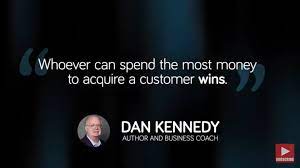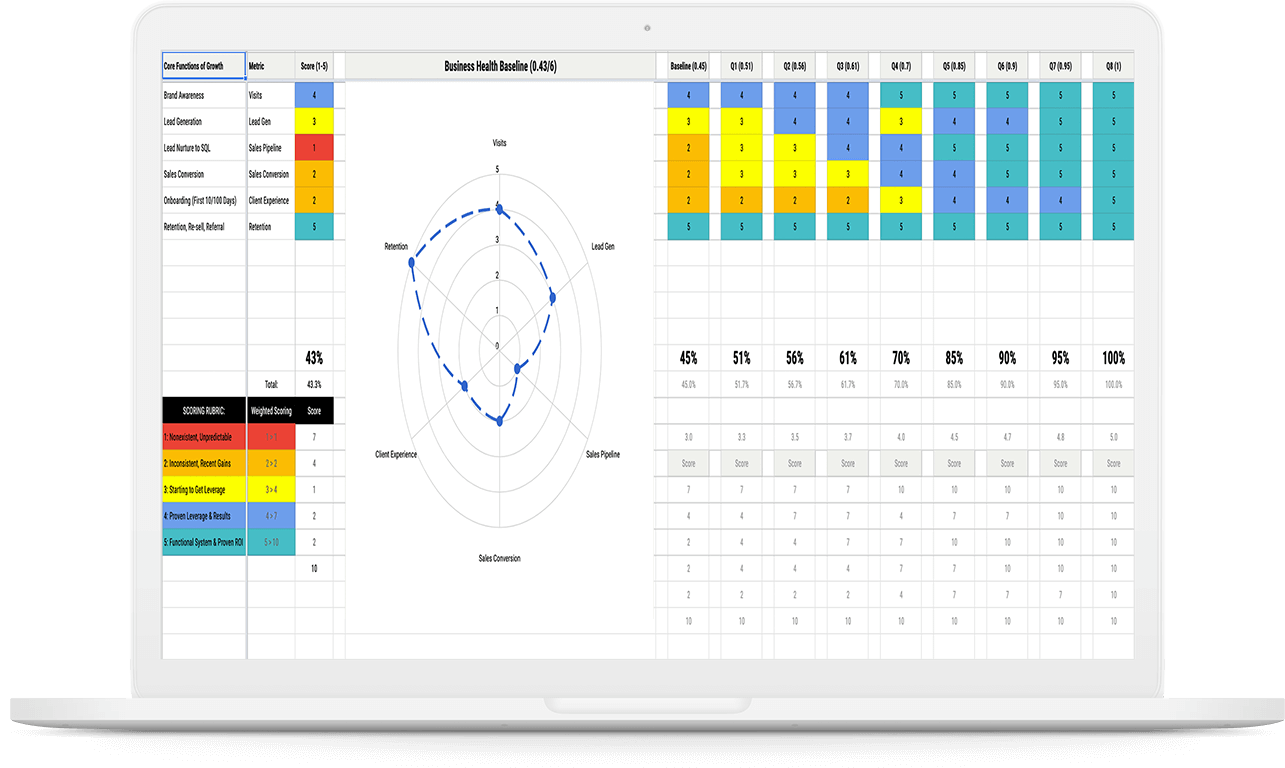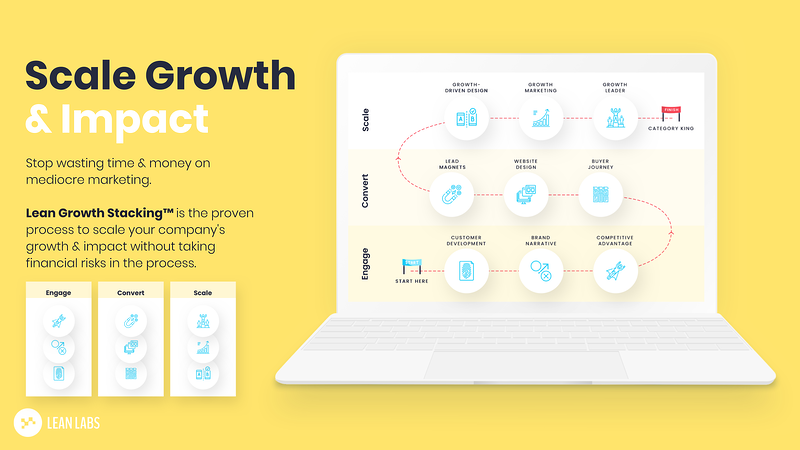Without a growth strategy, content marketing doesn’t work anymore.
Since there is no overall growth marketing strategy aligned with content, brands cover all kinds of topics. Usually, in pursuit of “thought leadership,” brands jump from topic to topic, rarely pausing to consider whether or not that content will actually drive brand growth.
Content marketing for a lot of brands is like the wild, wild west. There’s a lot of bullets flying everywhere, but the only people getting rich are the ammunition manufacturers.
For too many brands, especially in the B2B space, the ROI for content marketing is only positive for the ones creating the content. In many instances, that’s the marketing agency.
What Is the ROI of Content Marketing?
Content worked for everyone like gangbusters a decade ago. If you were a brand that had embraced content marketing, you were winning. And, you’re probably in a dominant position today because you created content when everyone else was still twiddling their thumbs and cold calling all their prospects.
It doesn’t work like that anymore.
Today, everyone is creating content. It’s like the other end of the extreme. It’s kind of like when everyone in the room is whispering or sitting quietly, someone who yells loudly gets a lot of attention. But, when everyone in the room is talking at high volumes, it’s a lot more difficult to get the same level of attention - if not downright impossible.
That’s why the ROI of content marketing is taking a beating.
Gary Vaynerchuk is Wrong

Gary V is highly successful and has been on the speaking circuit for quite a long time. And one of my favorite clips was when Gary told the story of speaking with a CEO about social media. The CEO asked him what the ROI of social media was, and Gary snapped back, “what’s the ROI of your mother?”
It’s funny! And he was right ten years ago.
No one asks about the ROI of oxygen. But everyone understands without it, you die. Content has become oxygen. And people are surviving because of it, but it’s not helping them grow. They are just surviving.
That’s why Gary V is so wrong today with that mindset. If your marketing - especially content - is not driving an actual return on your investment, stop!
It’s time to pause and come up with a strategy that will bring ROI.
Why?
Because it’s simple business sense.
The Business Equation

Whoever is going to dominate the market is the one that can spend the most to acquire a customer. If you can spend $5 to profitably acquire a customer, but your competition can only spend $3 to be profitable, you win. You can just spend your competition out of business.
That means margin is king.
If your competitor is investing in content (they all are), but it’s not driving a real ROI, that means he is vulnerable.
Getting to a Profitable Content Marketing Strategy
Step one, content marketing detox. You have to tear yourself away from vanity metrics before you can really get the 2021 model of content ROI.
Stop being satisfied with pretty traffic charts. Traffic in itself is a vanity metric.
Any goofball with a keyboard or video camera can generate traffic. I mean, there are two dufus brothers (I think their name is Paul) that get millions of views every month.
In marketing, you can’t shoot from the hip. You need a strategy, or your content marketing ROI will always be a mysterious business investment you can’t live without.
I mean, if you’re competing in a room full of screamers… if you’re not screaming too…
You get the point.
Learn the Six Levers of Growth

The six levers of growth will unlock the ROI of content marketing. Really, it unlocks the ROI of all your marketing. But for this post, we’re specifically talking about content.
- Lever 1: Awareness
- Lever 2: Acquisition
- Lever 3: Activation
- Lever 4: Revenue
- Lever 5: Retention
- Lever 6: Referral
When was the last time you planned a content calendar based on customer referrals?
Most content marketers (and just about every content marketing agency) concentrate on only two of these levers - the first two.
Content marketers are really quick to pat themselves on the back over total traffic and even total leads generated.
But do the marketing teams quickly get defensive when you ask why their content isn’t driving an increase in customer acquisition? This is usually when the marketer points at the sales team and pushes the responsibility onto them.
This is a problem.
And as long as you allow your marketing team to point at sales and sales to blame marketing - you will never crush your competition. And, you’ll never be able to measure your content marketing ROI.
If you want to measure your effectiveness on the six levers of growth, you can download the Growth Grader for free.
Work Backwards to a Content Strategy
Walk with me in this backward journey real quick:
What would make our customers promote our service or product to their friends or colleagues?
That’s the key!
Whatever would make a customer promote us is probably the same reason they stay with us. And it’s probably the same reason they purchased in the first place - at least, that should be what makes them purchase.
And whatever makes them purchase, if we’re not activating the leads with that message, we’re crazy. And if that message will activate them, it will convert them. And if it converts them, it will attract them.
The secret to content marketing ROI is finding what that thread is and creating a content strategy around that.
Whatever is going to make my customers promote me, that’s what I need to be building brand awareness around. Therefore, that is my content marketing strategy.
If that is my content marketing strategy, I should be able to measure the effectiveness of my content along all of those six levers of growth.
As I hit traffic targets with my aligned, congruent marketing message, I should also hit acquisition targets. And since my message is aligned throughout the entire buyer journey, my activation targets should also be hit.
And so on, and so on.
How to Measure Content Marketing ROI
1: Set a Baseline
Did you know, Marketing Qualified Leads (MQL) is the first marketing metric that cannot be faked?
Traffic can be faked.
Lead gen can be faked.
But a list of qualified prospects that have opted in - that can’t be faked.
- How much of your content marketing traffic is verifiably generating qualified leads?
- How many of those qualified leads are engaging deeply with sales?
- How many engaged leads actually buy?
- How many customers actually stay and are happy?
This is your baseline.
2: Set a Focus
If you’ve completed the Growth Grader, you know where you need to focus your attention first. Set goals to drive the right growth levers to make the most immediate impact.

3: Get 100% Message Congruency
Let’s imagine you need to build your website traffic and focus on awareness, thanks to the Growth Grader. Before you create a single piece of content, get your message congruent from the last lever to the first.
What is the message you need to drive home (the one that will make your customers promote you?) Find that why, and build a message mantra that you will hammer with abandon.
If you need an example, our marketing message is the six levers of growth. Driving those is why our customers constantly refer us to new clients. They refer us because we deliver results. And we acquired them as customers because they believe we can drive the six levers of growth.
And that belief was not an accident. But, we hammer that belief in our lead nurturing, which helps them activate. And we hammer that in our lead generation - hence the Growth Grader.
And, as you see in this article, we hammer it in our content as well.
It’s a congruent message, from back to front - from the end of the buyer journey all the way to the very tippy-top of the funnel.
What is your message? That must be identified now.
4: Plan and Budget for Growth
You will need to invest in your new content marketing plan. If you’re not sure how to plan, budget, and accelerate growth, you need to figure it out. We show how we do it in our Lean Growth Stacking content.

5: Create a Content Calendar
You should already know how to do keyword research and plan a content calendar. If you don’t, you might need to hire a growth team to get that skill set for your company asap.
Create a content calendar based on your message.
Your blog posts shouldn’t be about random topics. They should all be on message.
If a topic you want to write about doesn’t match with the message, skip it or backlog it.
Don’t be a limousine company writing about chocolate chip cookie recipes. If your customers love your bespoke transportation, you hammer bespoke until your fingers are bloody.
Nothing else.
6: Execute
We like to work on 90-day sprints when it comes to content marketing. We find it works best and gives us three solid months of head-down action before coming up for air to see what we can learn from our executed strategy.
Regardless, while you work on your content calendar, just focus on execution until that calendar is finished. Only then do you look at the Growth Grader again to see if you moved the needle or not.
7: Measure & Learn
What did you invest in, and what impact did that investment have on your Growth Grader scores?
If you want direct numbers, follow the metrics through the six levers:
- What percentage of your content traffic became leads?
- What percentage of your leads were qualified?
- What percentage of the qualified leads were activated with sales?
- What percentage of the activated leads became customers?
- What percentage of customers were retained?
- What percentage of retained customers gave referrals?
Tools like HubSpot help to measure all of these metrics through the filter of the first. So, if you have paid ads, you can measure all six levers for those ads. If you did blogging, you could measure all six levers by organic traffic. If you invest in guest posting, you can filter all six levers by referral traffic and so on.
Driving Content Marketing ROI
When it comes to the screaming room, that’s just a fact of life now. You can’t go back to the way it was. But you also don’t have to scream the same confusing jumble everyone else is.
If you want your content to drive business impact, it must connect with a message that is impactful - to your customers.
If your message is impactful, your content will pack a punch the noise can’t compete against.
How do you know if your message is impactful?
Easy: It’s the single message that resonates all the way through the buyer’s journey.
And if you want your marketing to stand out, it needs that message to be congruent from your social media posts all the way through to customer communication on the back end of a customer’s life cycle.









